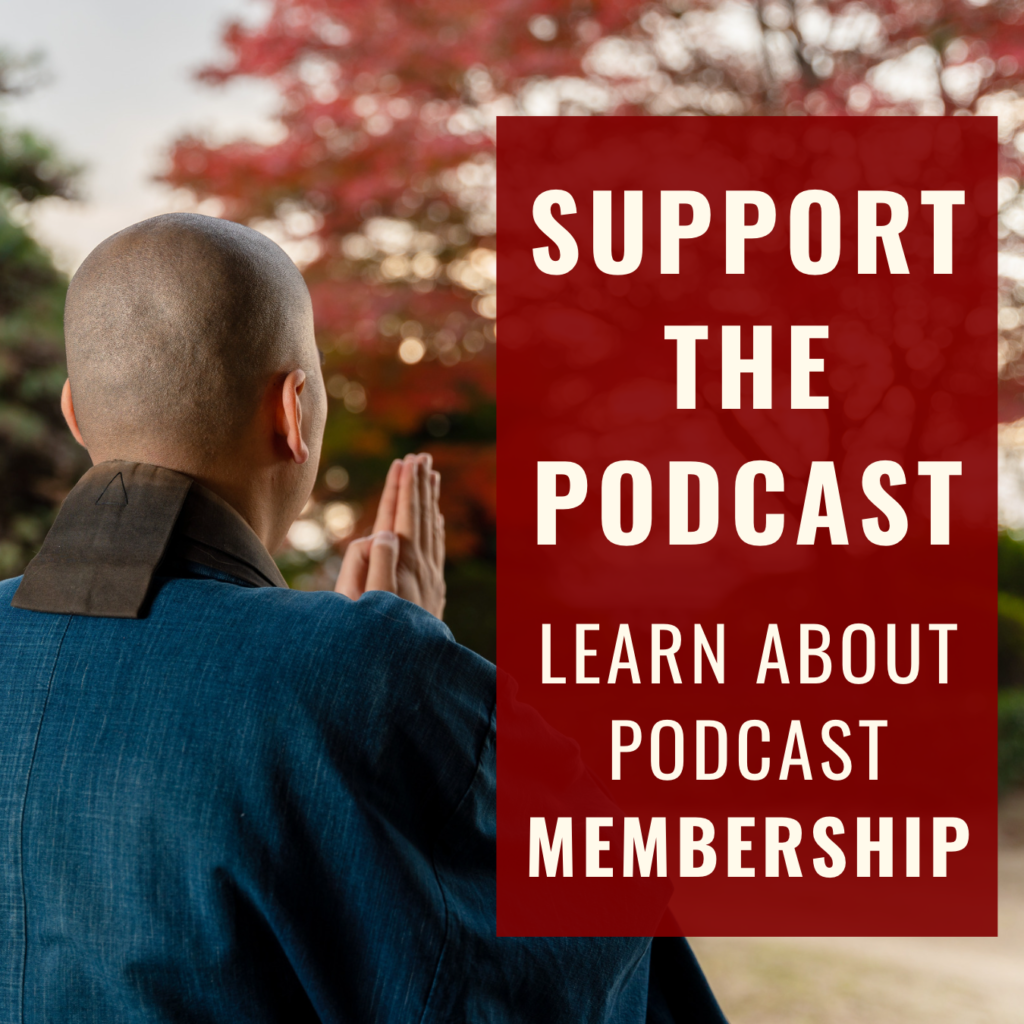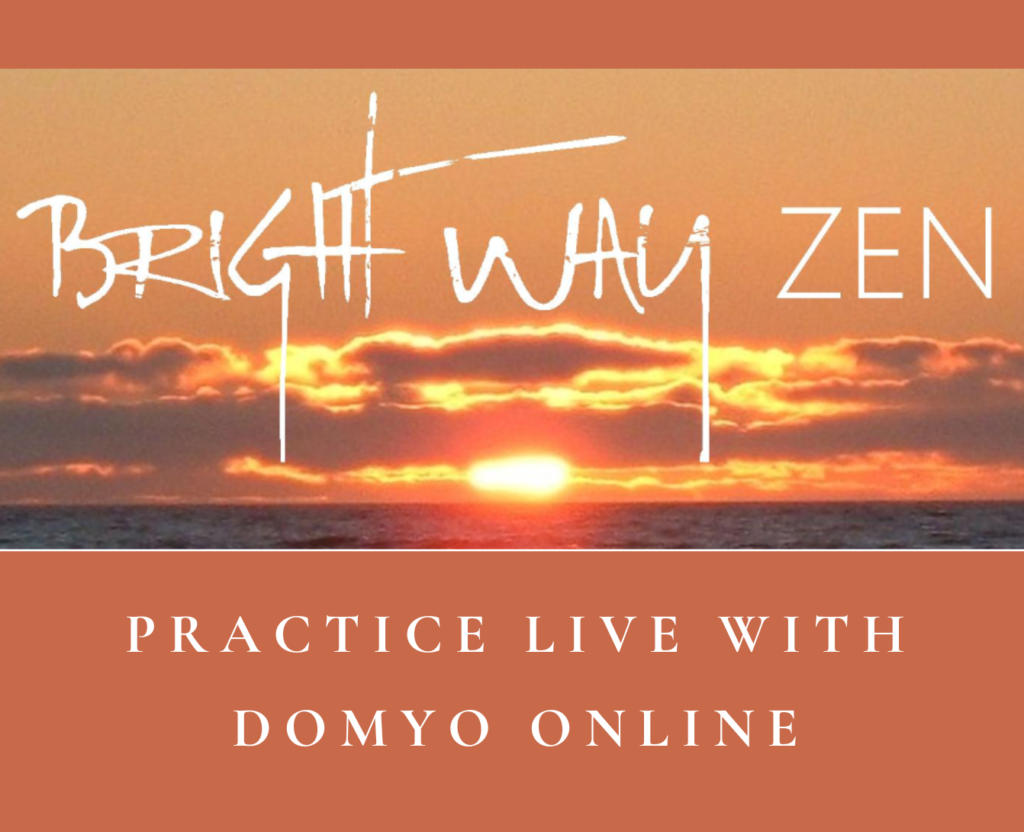
by Domyo | May 31, 2025 | Buddhism Today, Buddhist Practice
In this episode I make the case for accommodations for people with physical challenges, even in sesshin, and then describe a number of tried and tested ways Sanghas can do this. I finish by talking about how to negotiate with a Sangha if you are someone with physical challenges and hope to be accommodated, particularly in the practice of intensive retreat.

by Domyo | May 24, 2025 | Buddhism Today, Buddhist Practice
People with extra physical challenges – disabilities, chronic illnesses, or advanced age – often find it impossible to participate fully in Zen practice without special accommodations. Seated meditation (zazen) can be painful, and the demands of silent meditation retreats (sesshin) can be prohibitive. However, an important part of Zen practice – especially sesshin – is how everyone follows the forms together, doing the same things at the same times. The whole idea is to minimize the need to exercise personal choice, and to use a certain amount of physical discomfort to bring us up against the existential matter of our lives. How can Sanghas support the Zen practice of people with physical challenges while preserving what is supportive to those without them?

by Domyo | Mar 31, 2025 | Buddhist Practice
Chances are, whether you’re aware of it or not, you have a certain way of framing your Dharma practice. That is, you function using a conceptual framework that defines your relationship to your practice, the intent of that practice, and what is supposedly being transformed by that practice. When you’re centered in the moment, you can practice without framing, but most of the time you’ll be framing things whether you mean to or not. It’s good to be conscious of your framing and choose a framing that’s helpful.

by Domyo | Mar 15, 2025 | Buddhist Practice
Almost everyone who practices meditation or mindfulness encounters the phenomenon of the wandering mind – when, despite your conscious intention, your mind is filled with thoughts that have nothing to do with your current experience. You can employ various techniques to let go of the thoughts and “bring the mind back” to your meditative object or to the present moment, but often these techniques are applied as if all mind wandering was of the same nature. I investigate different reasons your mind wanders and how they call for different responses.

by Domyo | Feb 28, 2025 | Buddhist Practice, Buddhist Teachings
Equanimity is a powerful state of being that not only reduces our stress and suffering but also enables us to respond effectively. However, in our efforts to achieve some measure of equanimity, we may end up stuck in the tentative calm of denial or in the coldness of indifference. True equanimity is clear-eyed, undefended, compassionate, and inclusive – but how do we cultivate it? I explore the virtue of equanimity from a Buddhist perspective.

by Domyo | Feb 17, 2025 | Buddhist Practice, Ten Fields of Zen
The tenth Field of Zen is Connecting with the Ineffable. Zen is not based on a belief in God in a theistic sense. However, at its core there is a strong emphasis on a much more profound, inspiring, significant, and hopeful Reality than the bleak, mundane, and discouraging one people sometimes experience in their ordinary daily lives. Call this “greater reality” anything you like – God, the Divine, That Which is Greater, Other Power, the Ineffable, the Great Mystery, the Great Matter of Life and Death – but you have tasted it at peak moments of your life. Zen encourages you to explore and deepen your relationship with the Great Matter.

by Domyo | Dec 28, 2024 | Buddhist Practice, Ten Fields of Zen
The eighth Field of Zen Practice is Realization, gaining a direct, personal experience of the truth. Realization helps you respond appropriately, allowing you to live by choice instead of by karma. Even more importantly, it gives you a larger perspective that can result in equanimity, even joy. There are different levels of truth, and the Dharma – Reality-with-a-Capital-R – is the biggest truth of all. Fortunately, it is a wonderful and liberating truth to wake up to. However, it’s important to understand that there is no “Realization” you can attain that means you know everything. The truth is infinite and there is always more to awaken to and embody.

by Domyo | Dec 18, 2024 | Buddhist Practice, Ten Fields of Zen
This episode is the second half of the seventh chapter of my book-in-progress, The Ten Fields of Zen: A Primer for Practitioners. Listen to/read the previous episode (288) first, where I talk about the importance of Opening Your Heart and how that effort is viewed in the Buddhist tradition. In that episode I also discussed the four Brahmaviharas – goodwill, compassion, sympathetic joy, and equanimity. I finish the chapter in this episode by covering self-acceptance, practicing with the real, human relationships in your life, and Opening Your Heart in Sangha.

by Domyo | Nov 29, 2024 | Buddhist Practice, Ten Fields of Zen
The seventh Field of Zen Practice is Opening Your Heart. Working explicitly to open your heart not only benefits other living beings, it puts you in accord with the Dharma and supports all other aspects of your practice. You work on radical self-acceptance to make Awakening and compassion possible. You work on real and personal relationships with other beings – overcoming your social fears, becoming more willing to be seen and known, learning to be authentic, and recognizing the Buddha-Nature manifested in others. Ultimately, self and other are not separate; in practice, you seek to manifest and realize this simultaneously.

by Domyo | Nov 16, 2024 | Buddhist Practice, Ten Fields of Zen
This episode is the second part of the sixth chapter of my book-in-progress, The Ten Fields of Zen: A Primer for Practitioners. In the last episode, I offered seven points about the role of Dukkha in our life and practice and discussed the first five points. In this episode I’ll finish the discussion with points six and seven.












